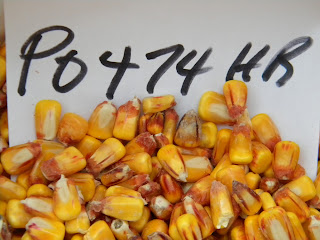I wrote about the possibility of Gibberella ear mould being an issue on September 6, hoping I was going to be wrong. I hate writing about problems, but Gibberella is showing up consistently throughout the neighbourhood. Based on discussions with customers, it is time for a Gibberella primer lesson.
1. The organism, Fusarium graminearum, is the same pathogen that causes Fusarium head blight in wheat. Wheat harvest, which causes clouds of spores to spread, coincides nicely with silking time in corn. After infection through the silk channel, the disease lurks at the tip of the developing kernel where it meets the cob. If wet, moderate conditions persist, it will grow and mature into a toxin producing pain for the Ontario corn farmer.
2. Current status of samples submitted to labs to date indicate 60% of those samples have 0-2% Vomitoxin and 30% have 4-6% vomitoxin. The hot spots seem to run from Elgin, north through Middlesex, into Huron and Perth. As harvest is delayed, the problem will get worse.
3. Proper procedures for sampling would include doing your best to accumulate a representative sample. Taking sub samples from more than one spot and mixing them is best. Use cloth or onion skin bags. Do not use plastic bags because plastic will sweat. Samples need to be taken to the lab immediately or frozen.
4. The livestock industry has experience with managing of corn containing toxins. Corn should be screened to take out fines and red dog, which contain the highest levels of toxins. Dry corn down to 13% at high temperatures. Drying corn is the only way to stop the toxins from getting worse. Aerate well to eliminate hot spots. Toxin inhibitors and binding agents are helpful for producers that are feeding contaminated corn.
5. It is not the amount of toxin in the corn, but the amount of toxin that is in the finished ration. Dilution is the solution. Adding protein supplements, minerals and premixes help reduce the overall toxin concentration in the final ration. Be careful using distillers grain in a ration because the distilling process will concentrate toxins.
















